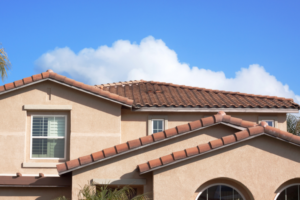Florida roofing, known as the Sunshine State, is renowned for its tropical climate, beautiful beaches, and unique lifestyle. With its sunny days, balmy breezes, and occasional hurricane threats, Florida’s weather can be both a blessing and a challenge for homeowners, particularly when it comes to their roofs. In this comprehensive guide, we’ll uncover the roofing secrets of the Sunshine State, providing valuable insights into Florida’s roofing needs, the best materials, and essential maintenance practices to keep your home safe and comfortable.
Understanding Florida’s Climate
Florida’s climate is marked by distinct features, including its tropical and subtropical characteristics. The state experiences hot, humid summers and mild, drier winters. However, it’s also prone to hurricane seasons that can bring heavy rains and strong winds. Understanding Florida’s climate is the first step in making informed roofing decisions.

Hurricane Season
Florida’s hurricane season typically runs from June through November. Homeowners must be prepared for the possibility of tropical storms or hurricanes that can damage roofs and homes. Ensuring your roof is hurricane-ready is crucial to protect your investment.
UV Exposure
Florida’s abundant sunshine means increased exposure to ultraviolet (UV) rays, which can deteriorate roofing materials over time. UV-resistant roofing materials are essential to combat this issue.
Rain and Humidity
Florida experiences a fair amount of rain and high humidity. Roofs in this climate should be designed to resist moisture, mold, and algae growth.
Roofing Materials for Florida
Choosing the right roofing material for your Florida home is paramount. Each type of roofing material has its advantages and disadvantages, making it crucial to select one that can withstand Florida’s unique climate. In this chapter, we’ll explore the most suitable roofing materials for the Sunshine State.
Asphalt Shingles
Asphalt shingles are a popular choice in Florida due to their affordability, versatility, and ease of installation. They come in various styles and colors to complement different architectural designs. While they are relatively durable, homeowners should opt for high-quality, UV-resistant shingles.
Metal Roofing
Metal roofing is highly durable and ideal for Florida’s climate. It can withstand hurricane-force winds and is resistant to UV damage. Metal roofing is also energy-efficient, reflecting the sun’s rays and reducing cooling costs during hot summers.
Tile Roofing
Clay and concrete tiles are prevalent in Mediterranean and Spanish-style architecture in Florida. They offer excellent durability and can withstand high winds and hot weather. Tile roofs are also energy-efficient and come in various styles and colors.
Flat Roofing
Flat roofs are common in Florida, especially in commercial buildings. They are cost-effective and suitable for certain architectural designs. Proper insulation and maintenance are essential to prevent water pooling and leaks.
Roofing Maintenance in Florida
Florida’s climate requires specific maintenance practices to ensure the longevity of your roof. Regular inspections and proactive measures can prevent costly damage and ensure your home remains comfortable.
Hurricane Preparedness
Before hurricane season, inspect your roof for loose shingles or tiles and secure them. Consider hurricane straps or clips to reinforce your roof’s structural integrity. Trim overhanging tree branches that could damage your roof during a storm.
UV Protection
UV rays can cause shingles to deteriorate and lose their protective properties. Regular inspections and UV-resistant coatings can help combat this issue. Replace damaged or worn shingles promptly.
Moisture and Mold
Florida’s high humidity levels can lead to mold and algae growth on roofs. Install algae-resistant shingles and ensure proper attic ventilation to mitigate this problem.
Regular Inspections
Schedule professional roof inspections at least once a year, preferably before hurricane season. Professional roofers can identify potential issues and recommend necessary repairs.
Conclusion
Living in the Sunshine State means enjoying beautiful weather year-round, but it also requires homeowners to be vigilant about their roofing. Florida’s unique climate demands specific roofing materials and maintenance practices to protect your home. By understanding the challenges of the state’s climate, selecting the right roofing material, and following regular maintenance routines, you can ensure your roof remains in top condition.
Investing in your roof is an investment in your home’s safety, comfort, and longevity. With the knowledge and strategies provided in this guide, you can enjoy the Florida sun and weather the storms with confidence, knowing that your roof is ready for whatever Mother Nature brings to the Sunshine State.
In Florida, roofing isn’t just about shelter; it’s about embracing the unique beauty of the Sunshine State while keeping your home safe and comfortable.

